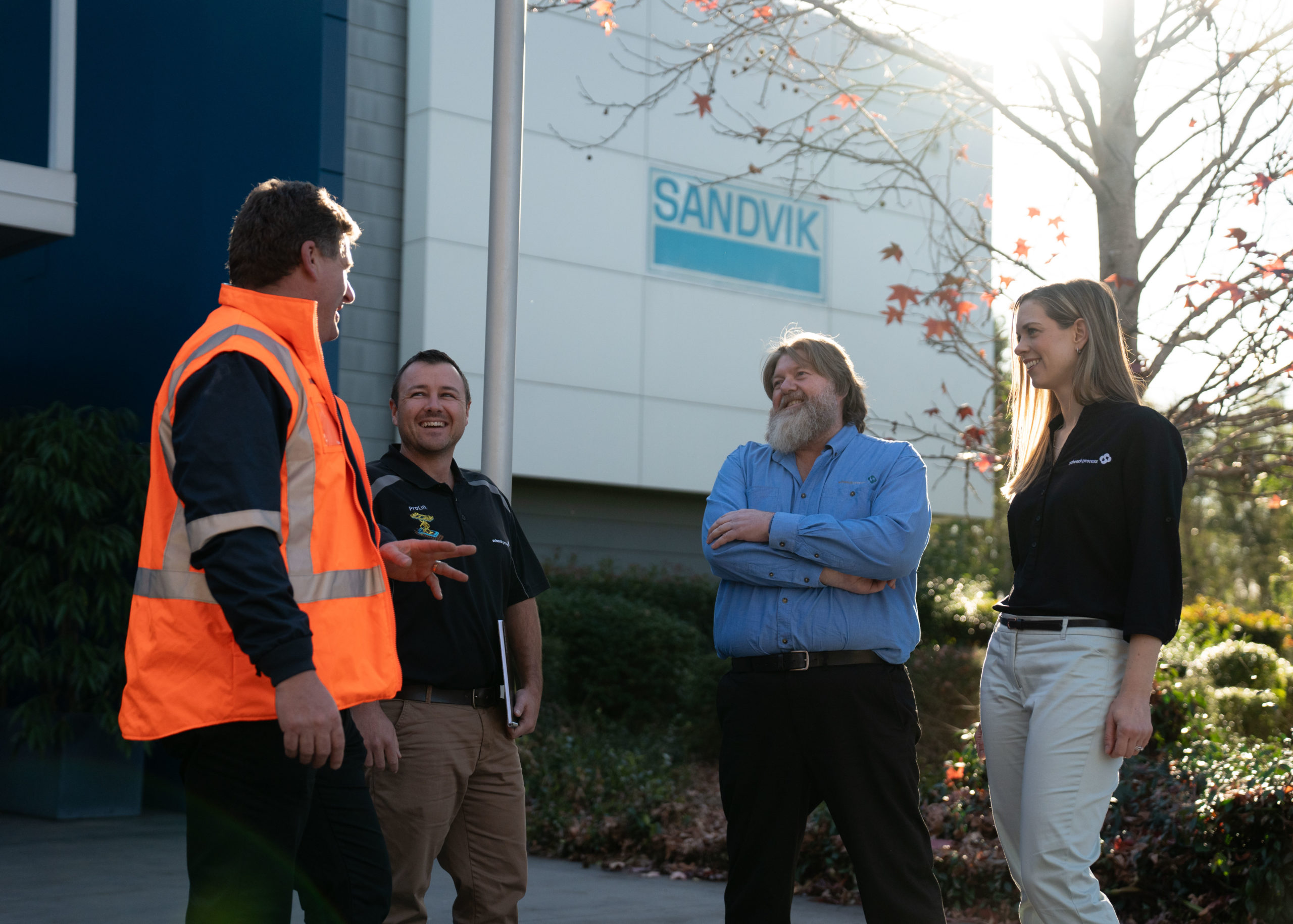By Geoffrey Cann

The aviation fuel market is now ripe for fraud. Here’s how to prevent fraud from corrupting a market vital to decarbonization.
Of all the engines burning fuel today, there’s a good bet that the very last one to go still will be a jet engine.
If you watched the first Iron Man movie in 2008, you likely remember the near catastrophic crash when Tony Stark decides to take his experimental Iron Man suit stratospheric, only to discover that the temperature at altitude is quite a bit lower than at sea level. His suit ices over, the electronics short, and he begins to plummet.
I’m not an aeronautics engineer, but I’m doubtful the scene is true to real life — the skies were practically clear in the movie so he wasn’t flying through lots of clouds or vapour; at his speed, water droplets would likely stream off; and, he didn’t fly nearly high enough (5 miles up) for ice particles to form. But I digress.
The scene repeats at the end when he confronts his nemesis, Obadiah Stane, who has built an even bigger iron suit. Stark, sensing that Stane likely hasn’t tested the suit at altitude, heads to the heavens, and sure enough, Stane’s suit ices over, leading to his own non-terminal descent.
These scenes are overly dramatic so as to create great cinematic experiences but embedded in the scenes is a truth—the temperature in the troposphere is generally lower the higher up you go.
Fuels used in flight need to stay in a fluid state at the very low temperatures where jet aircraft cruise, at the upper end of the troposphere where temperatures can be -50C or colder. Frozen fuel and frozen fuel lines are unrecoverable problems at that altitude.
For decades, we have relied on jet fuel for this task. Jet A is a form of energy-dense kerosene that is formulated specifically to stay liquid, stable and flowing at low temperatures and high altitudes. Finding an energy dense substitute that doesn’t freeze, and doesn’t weight too much has outwitted humanity so far.
Aviation Decarbonization
Aviation is a particular target for decarbonization. Jet emissions are merely 2% of global CO2 emissions, but aviation’s overall impact on climate is much higher (almost double) because jet emissions are higher up in the atmosphere, and are accompanied by sooty contrails that know no national boundaries.
Airlines are among the largest individual fuel consumers on the planet as they are few in number and fuel is their biggest expense. Their individual fuel decisions therefore matter. WestJet, an airline operator based in oil-rich Alberta, is the single largest fuel consumer in the entire province, which is also home to Canada’s energy intense oil industry. For all the attention that the oil industry attracts in energy transition, WestJet barely registers.
The aviation industry is pinning its decarbonization plans on more fuel efficient engines from companies like Rolls Royce and GE, and on sustainable aviation fuels or SAF (fuels that are based on converting an existing sustainable CO2 feedstock into fuel that returns the CO2 back to the atmosphere on combustion).
Engine makers are doing their part. Engines have progressively become more fuel efficient, but so long as fuel is combusted, engines will produce emissions. SAF will have the greater impact, short of banning all flying, which is impractical in countries like Canada, which has one tenth the population of the EU, but more than double the land mass.
SAF Problems
The perfect SAF would be identical to Jet A in performance (flow rate at altitude and low temperature) and would leverage the existing infrastructure for fuel handling (storage, distribution, transfer). That way today’s investment in aircraft and aviation fuel handling is preserved, and airports don’t need overhauling.
Here’s just a sample of the problems in delivering SAF to a thirsty global market.
Enormous Volumes
The volumes are huge—jet fuel already accounts for about 8% of global oil production, or 750m barrels per year. For now, aviation is a rich world privilege—only 20% of humanity has ever been on a plane, that 20% flies frequently, and the other 80% are itching to join them. Aviation is on track to be an annual 3 billion barrel business by 2050. This implies a compounded annual growth rate (CAGR) of 15.2% for aviation fuel for the next 25 years to meet the demand projections.
Oil refineries are practically the sole source of jet fuel (aside from a handful of SAF producers), and they’re not expanding. Since jet fuel is not a natural product in crude oil, but must be manufactured, refineries have invested heavily in the asset mix to produce aviation fuel in the enormous quantities demanded of the market. Producers do not want to strand these assets as it implies a drop in return on assets for their shareholders, so unsurprisingly the top 5 largest SAF producers are not traditional oil companies.
Today’s SAF is more like a pharmacy product than a globally distributed bulk commodity, in that it is produced in very small batches, in largely craft facilities.
Scaling this industry, particularly in the OECD, will be a monumental challenge considering the slow pace of permitting and construction, and we’re already well behind.
Poor Feedstock Options
SAF depends on alternative feedstocks to crude oil, and the obvious candidate is some kind of biomass. But biomass has its own challenges. Converting biomass into jet fuel is energy intense already, creating another carbon problem to solve. Most biomass candidates are pretty low quality, so yields aren’t great. Using a high quality biomass source such as corn or sugar cane puts the fuel business into direct competition with the food industry for farmland access. It’s hard even for the rich world flyers to reconcile their desire to fly with creating more food insecurity for the vulnerable.
Unsustainable Supply Chains
The supply chain model for jet fuel is itself energy inefficient. Most airports are some distance from refineries. Moving the volumes of jet fuel involved in the industry from point of production to point of use is an energy intense exercise. It makes little sense to produce a sustainable fuel that has to be transported to airports using unsustainable fuel. Jet fuel is thus encumbered with an additional hidden carbon charge.
Busted Policies
Real-world policy choices are inadvertently blocking the growth of the SAF industry. One example is taxation. At the World Petroleum Congress, a WestJet executive lamented how his airline needed to fly to San Francisco to purchase SAF, likely priced as a premium product, and it still paid a carbon tax. How is that possible?
A number of countries have started to walk back their policies intended to promote energy transition. The UK has pushed back the deadline for selling new gasoline and diesel cars and the phasing out of gas boilers for residential homes. Canada suspended carbon taxes on home heating oil and is now feeling the pressure to suspend carbon taxes on other fuels used to heat homes (such as natural gas). Some government somewhere who is highly dependent on its airline industry will feel the pressure to remove taxes on aviation fuel.
Capital markets are not all that keen to invest in new energy businesses when the policy landscape is so fluid. Airlines are then forced into the risky secondary market for carbon offsets.
A Broken Market
It’s clear that the forward supply of SAF is going to fall well below the demand for SAF for decades, creating the conditions for fraudulent versions of SAF to appear. Proving that SAF is indeed from sustainable sources today relies on faulty manual processes that readily succumb to fraud. Volkswagen’s diesel-gate episode demonstrates that even well-run and principled companies can falter when the incentives to misdirect the market are strong enough.
The petroleum industry, from upstream producers to downstream refiners, has long resisted putting into place the requisite information solutions to track and trace its products through the supply chain. Participants argue that regulatory burdens placed unevenly on the industry create leaks in the system, and unfairly penalize those attempting to be compliant with those who do not. Many countries that produce oil are under government control and do not have the market incentives or the institutions to implement such widespread fuel tracking.
The scale of the industry, the huge number of fuel handling participants, the challenges of blending products, the tricky math of mass balancing, the absence of standards in the information landscape, and information sovereignty laws are other contributing factors.
As has been the case now for some time, an achievable digital solution for product assurance is at hand.
A Compelling Solution
For years now, various supply chain industries, from food stuffs to diamonds, have been exploring how they can track and trace inputs into and through their business across geographical boundaries, suppliers, and infrastructure services companies. The intent varies. For diamonds, it is to stem the flow of blood diamonds from dicey producers. For food, it is to help identify contamination sources so that harmful products are detected as quickly as possible.
Some companies in the oil industry have also been investing in innovative digital ledger technologies that enable players to track the movement of petroleum products, accounting for idiosyncrasies like product spec variations, blending, mass balancing, and temperature adjustments.
As an example, Repsol has built an end-to-end track and trace solution for a biofuel based on hydrotreated vegetable oil (HVO). This is a diesel fuel that is produced from feedstocks such as vegetable oils and animal fats. HVO can be used in existing diesel engines without changes or adaptations (in other words, just like SAF for jet engines).
The HVO is tracked from source of production at a Repsol facility, through the supply chain managed by a service company, to final delivery to the customer, and even into the vehicle consuming the fuel. Underpinning this full cycle tracking is a clever ledger solution called Marco from Finboot.
Conclusions
The aviation fuel market is starting to look like Tony Stark in an iron suit, going stratospheric, but headed for a bad fall. Consumers shouldn’t buy green uplifts on tickets unless the airline offers detailed evidence that the levy is being spent on real SAF. It’s likely it isn’t, and airlines can’t prove otherwise unless they have digital solutions like Marco installed.
Artwork is by Geoffrey Cann, and cranked out on an iPad using Procreate.
Share This:
Next Article



